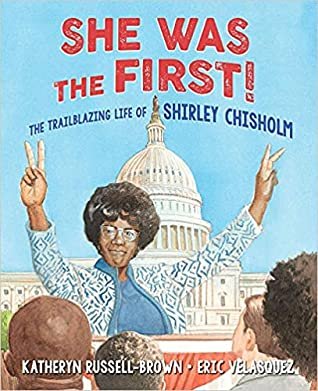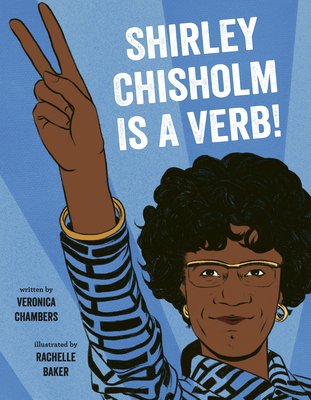International Women's Day & Women's History Month
Happy International Women’s Day! There are so many ways to celebrate! We love showing our students how this is an international holiday that has been celebrated for over 100 years (starting in 1911). It’s also fitting that this holiday takes place during Women’s History Month.
We wrote about different ways we recognized and celebrated Women’s History Month in our classroom a few years ago. Here are some new ideas we have either already started or hope to try soon:
We attended a virtual event at Politics & Prose with Michelle Duster and Laura Freeman for the new book Ida B. Wells, Voice of Truth (pictured above). Michelle Duster, the author, is actually Ida B. Wells’s great-granddaughter which added an extra level of excitement for students as well as helped them understand the time frame for when Ida B. Wells was alive a bit better. I’m a huge fan of author and bookstore events! We are still only able to attend virtually, but my students were still excited about it, especially when we could submit their questions over chat. We also paired this event with reading a Newsela article about the new Ida B. Wells barbie, and one of my students actually owns that barbie, so she brought hers in to show everyone. There are so many things to admire about Ida B. Wells and this gorgeous picture book, but I especially appreciate how she is portrayed in a way that makes it clear how multifaceted (and talented) she was, instead of being reduced to one aspect of her life like a journalist or an activist.
Why isn’t there a men’s history month? This is a question students have brought up in the past (less and less recently though, interestingly enough). We asked students what they thought and they came up with a lot of ideas! One idea they felt strongly about was that there has never been a female president and how that shows that women “don’t always get a turn.” Another student remarked about how you often hear about men and learn about men, but less about women because sometimes people forget “that women were helping too.” One student noted that in our class, we seemed to hear from more women (we only had female guest speakers that year), and we asked them why they thought their teachers made that choice. We felt that addressing this question directly helped make it clear we were focused on representation and equity instead of thinking about men vs. women.
Newsela is always a great resource so just a reminder to share articles with students! They have different text sets (a collection of articles) available for Women’s History Month. There are so many great articles and they are not just about famous women but also about kids and women who are doing inspiring work today. We’ve had students read Newsela articles individually so we can tailor articles to their interests and have them practice some nonfiction reading skills and in pairs or small groups to continue practicing those skills, build fluency by taking turns reading out loud, and discuss and share their reactions and questions.
Brainpop and Brainpop Jr. also have some lots of informative and kid friendly videos that can help students establish some background knowledge before reading which boosts comprehension or just teach them about someone new and inspiring. They have an entire Women’s History Month unit.
Student shares are always an excellent place to start. Our students loved writing letters to women who they admired or just sharing relevant news or updates. Sometimes they would read about someone and then want to tell the class just how amazing that person was/is and why as well as put in a plug for why others should read that book/article. It truly was an authentic use of literacy in action.
Below are some picture book biographies we love.
Shark Lady: The True Story of How Eugenie Clark Became the Ocean’s Most Fearless Scientist by Jess Keating. We saw the author at Politics and Prose (pre-COVID)! Also there is a movie about her (preview here).
Jump at the Sun: The True Life Tale of Unstoppable Storycatcher Zora Neale Hurston by Alicia D. Williams and Jacqueline Alcántara (illustrator). We virtually attended a Politics & Prose event for this book and Jacqueline Alcántara shared some of her sketches and preliminary plans with us.
Shirley Chisholm: two great books published recently (in 2020)! You can find them here and here. I couldn’t choose one so had to include them both. As we slowly gain more representation of women in government, it’s important to remember Shirley Chisholm who was a trailblazer in every way. We also shared how Kamala Harris wore a white suit in homage to Shirley Chisholm when she accepted the vice-presidential nomination and talked about what she might mean when she said, “I stand on their shoulders” to credit the women before her.
The Girl Who Thought in Pictures by Julia Finley Mosca. This book is about Temple Grandin and is always a favorite in our classroom.
Classified: The Secret Career of Mary Golda Ross, Cherokee Aerospace Engineer by Traci Sorell and Natasha Donovan (illustrator). This is a relatively new book that my co-teacher discovered at a bookstore. The author specifically addresses how Mary Golda Ross makes choices influenced by Cherokee values.
Latinitas: Celebrating 40 Big Dreamers by Juliet Menendez. This is another relatively new book that I have not gotten to read yet, but I’ve heard great things and definitely hope to get my hands on a copy of it soon. Anthologies are always popular in the classroom and often when reading them I learn more about people or learn about people I hadn’t heard about before.
Also, my third graders love the Who Was series and that series seems to keep expanding to add more people for kids to learn about. Apparently, they have surpassed 250 titles at this point and plan to keep going.
Happy reading and learning!







